Panel 1
Andrea Bianco, Saverio Devoti, Sara Morucci, Gabriele Nardone, Luca Parlagreco, Marco Picone, Giulio Settanta
The tide is a periodic phenomenon of rising and falling sea levels caused by the gravitational attraction exerted by the Moon, the Sun, and other celestial bodies on the Earth's water masses, and secondarily by meteorological disturbances. Data from the National Tide Gauge Network (ISPRA) were used to characterize the amplitude of the astronomical component of the tidal signal along Italian coasts. As well known, astronomical tides vary significantly across the different Italian seas, reaching their maximum range in the Northern Adriatic and Venice Lagoon, being strongly influenced by the basin's configuration.
The tidal phenomenon involves the rising and lowering of sea levels due to the gravitational pull mainly exerted by the Moon and the Sun on the Earth's surface, and secondarily by meteorological phenomena. Two components can thus be distinguished: an astronomical, periodic, and predictable component, and a stochastic, meteorological component. The rising phase reaches its peak during the maximum elevation of sea levels, referred to as high tide (or crest), while the lowest phase is called low tide (or trough). The difference between high and low tide is known as tidal range or amplitude. Tidal ranges vary over time based on the relative positions of the Earth-Sun-Moon system and spatially according to morphological features such as sea floor depth, coast shape, and water mass area. Sea levels are recorded along Italian coasts by tide gauge stations, primarily located within ports and managed by ISPRA. Astronomical tides were calculated using 69 harmonic constants that account for periodicities strictly linked to astronomical phenomena and those induced by meteorological phenomena. As indicated in literature, for practical modeling applications, especially in the Northern Adriatic and Venice Lagoon, where the phenomenon is most intense, only the seven main harmonic constants may be used. Conversely, for purely knowledge-related purposes and scientific research, utilizing 69 harmonic constants across the Mediterranean is recommended.
Monitoring and characterizing the astronomical tide component along Italian coasts can be particularly useful for identifying anomalies and extreme tidal phenomena relative to the natural condition of the sea, which varies at each measurement point.
Addresses knowledge requirements established in Directive 2000/60/EC regarding coastal and transitional waters, and Directive 2007/60/EC regarding coastal floods and inundations. No specific objectives are defined by legislation.
Panel 2
Data quality assessment
ISPRA
http://dati.isprambiente.it/dataset/rmn-la-rete-mareografica-nazionale/
Italian seas
1971 - 2023
Indicator assessment
Tides in the Mediterranean Sea have a frequency of approximately 12 hours, related to the passage of the Moon above an observation point on Earth. Thus, tides are influenced differently throughout the month depending on lunar phases. This component, known as astronomical tide, is reconstructed and presented. The measured signal, with its harmonic component subtracted, provides residuals containing information on stochastic meteorological phenomena that occurred.
This indicator is defined based on universal constants describing a phenomenon without characterizing any specific state.
This indicator is defined based on universal constants, which are not expected to change over time and therefore do not highlight any trend. Possible oscillations and differences over the years are attributed to purely stochastic phenomena, and consequently, trend evaluation is not anticipated.
Data
Table 1: Values of the astronomical tide along the Italian coasts
ISPRA - RMN
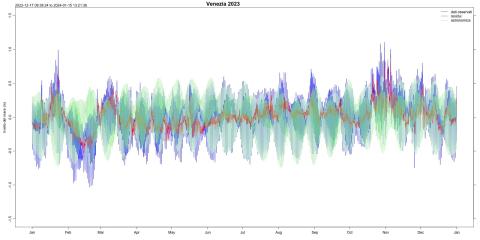
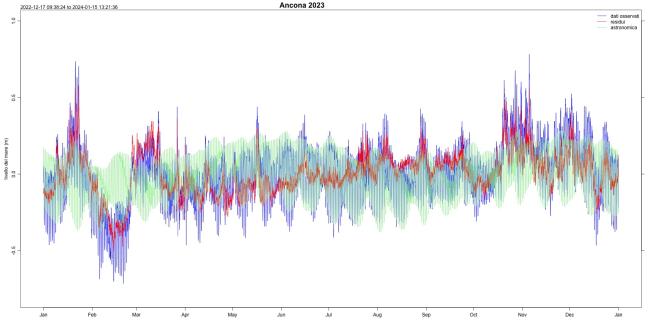

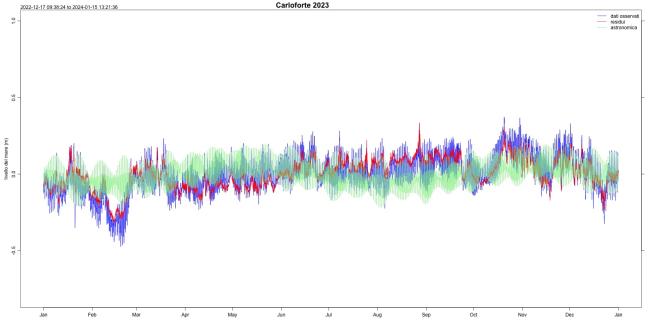
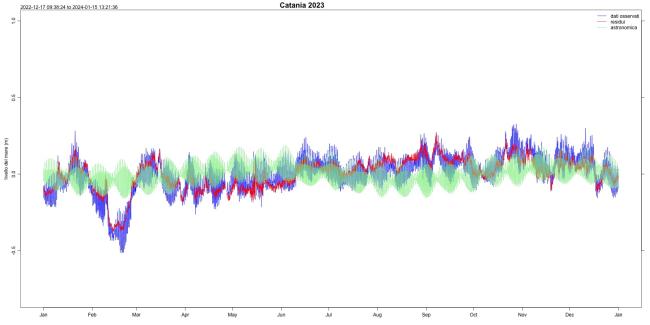
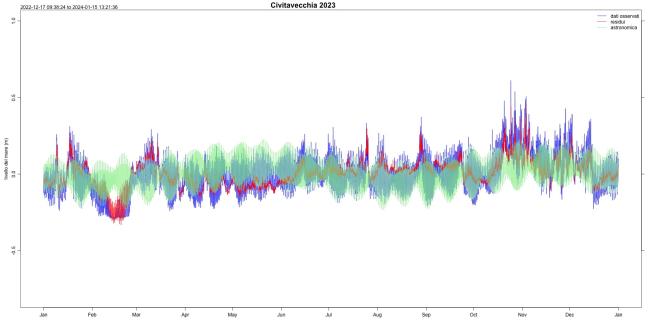
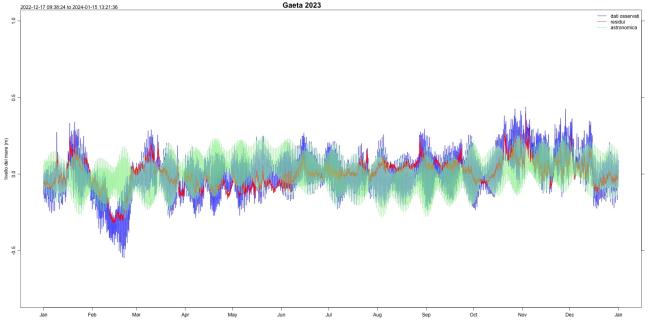
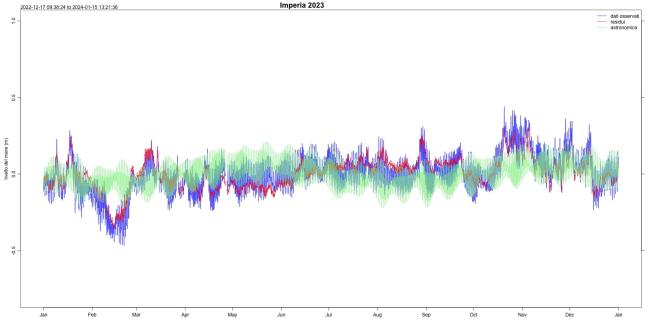
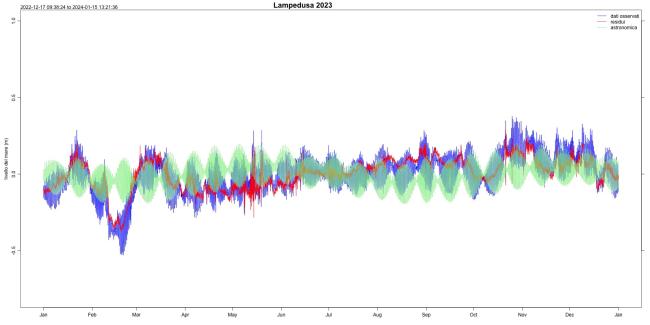
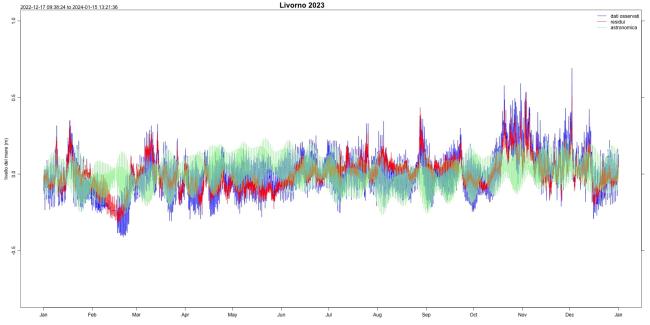
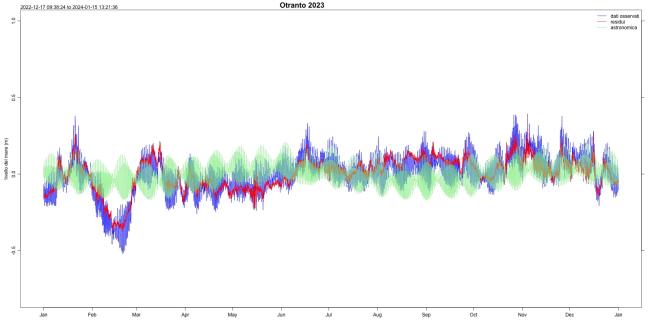
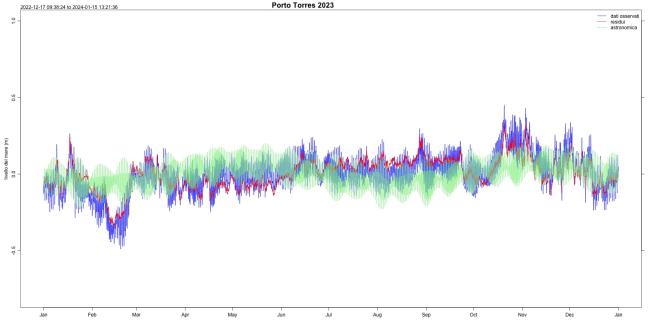
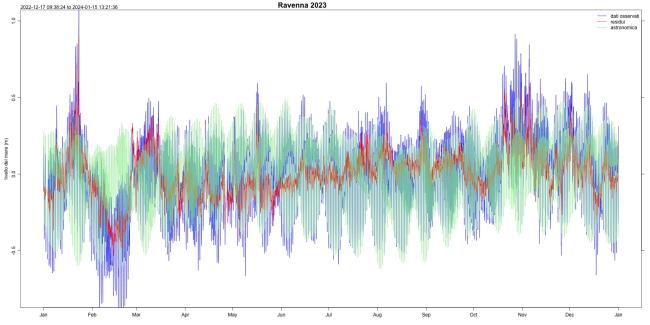

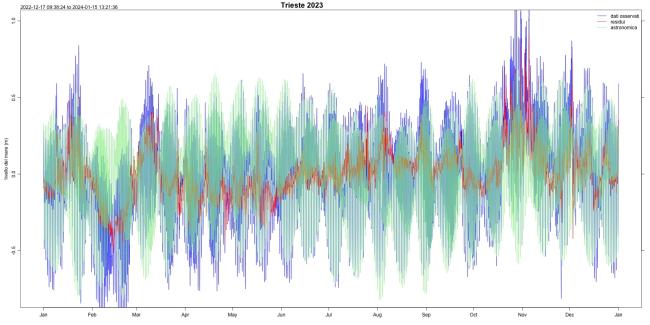
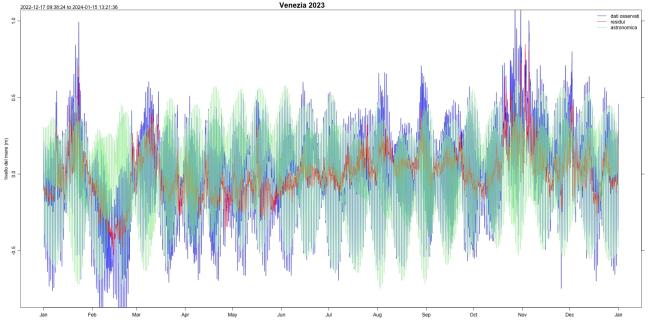
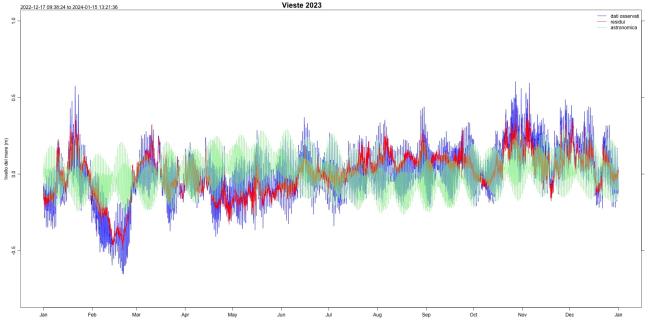
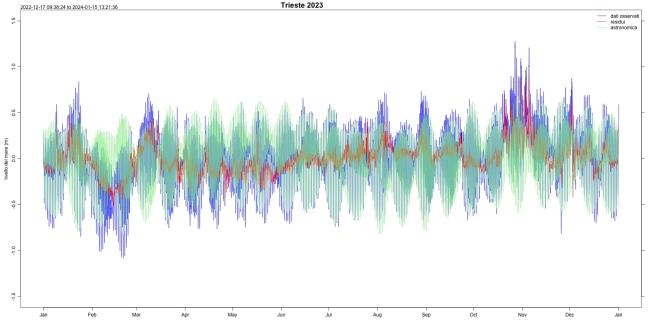
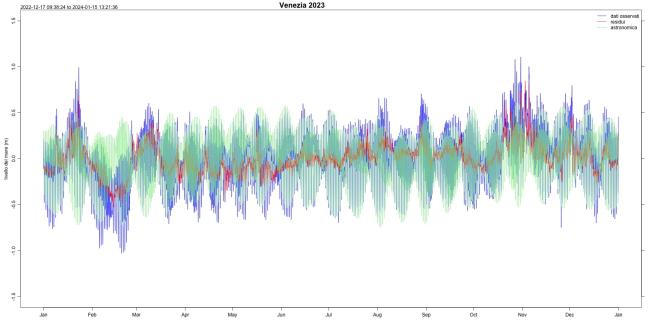
The indicator refers to 2023 and is presented to uniformly characterize astronomical tides locally along Italian coasts, updating and aligning values relative to observed data. Analyses from the Trieste and Venice stations, as is well known, show significantly higher astronomical tide levels in the Northern Adriatic (Venice and Trieste), with maximum and minimum tides nearly three times those recorded at other measurement stations (Tyrrhenian Sea) (Table 1). This is apparent in Figures 14, 15, 16, and 17 for both Venice and Trieste stations; Figures 14 and 16 depict the astronomical tide trend on the same scale as other Italian stations to highlight the phenomenon's intensity (and its exceeding the scale), while Figures 15 and 17 represent the astronomical tide in its entirety on the appropriate scale. The intense tidal effect in the Venice Lagoon is well recognized and reflected in this indicator's data. The nearly 50-year time series (1971–2023) allow detailed study of any oscillations in the astronomical tide components, predominantly due to stochastic phenomena, and monitoring their substantial stability over time, as expected from the governing physical phenomenon. Additionally, the availability of data distributed along all Italian coasts enables precise evaluation of the astronomical phenomenon, of extraordinary interest and utility even in operational forecasting contexts.